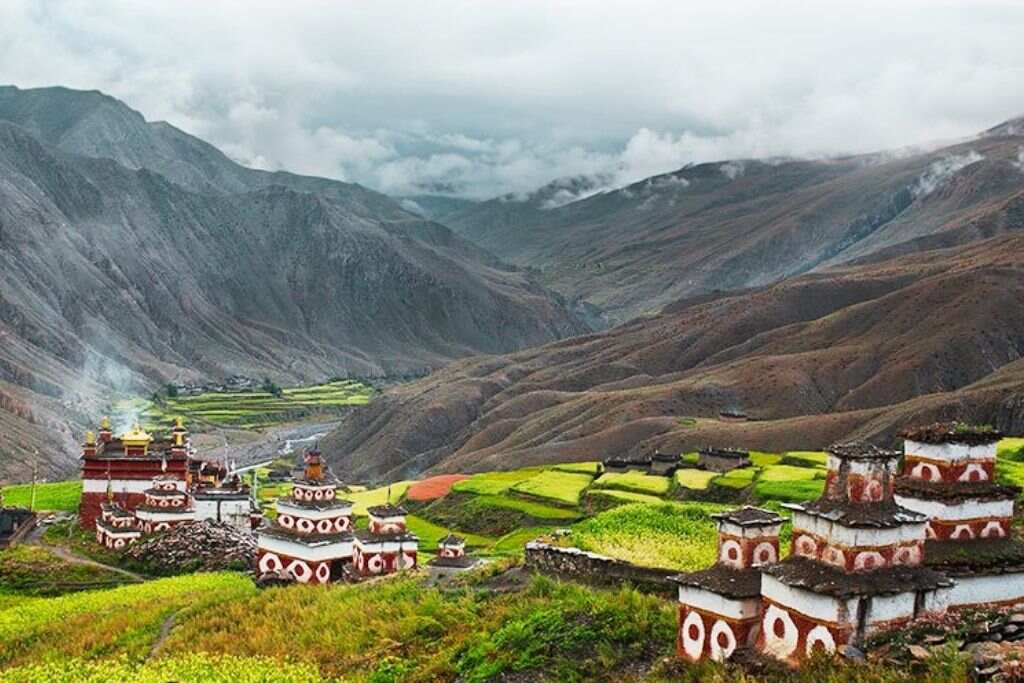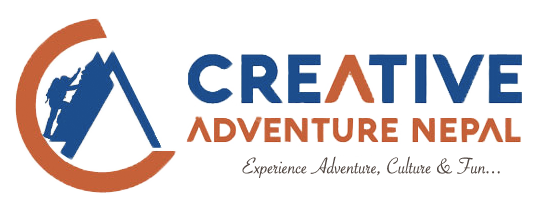
Trekking in the Dolpo region has only been permitted since mid-1989. The region lies to the west of the Kali Gandaki Valley, Dolpo is located inside the Shey-Phoksundo National Park in mid-western Nepal, behind the Dhaulagiri massif, towards the Tibetan plateau.
This remains a truly isolated corner of Nepal, time has stood still here for centuries as inhabitants of Tibetan stock continue to live, cultivate and trade the way they have done for hundreds of years. Most treks into Dolpo take from 14 to 30 days. The best time to trek here is towards the end of the monsoon season Sept to November. Shorter Dolpo reks are possible by flying into the air strip at Jumla.
The region offers opportunities to visit ancient villages, high passes, beautiful Lakes, isolated Buddhist monasteries and also to experience the vast array of wildlife inhabiting the region, including Blue sheep, Mountain Goat, Jackal, Wolf and the legendary Snow Leopard.
Program ( 26 Days )
You will meet with our airport representative and be transferred to the hotel.
We will spend our day sightseeing around some of the attractive world heritage sites within Kathmandu valley. We will complete all the necessary paper works and other preparations.
We will take an early morning flight to Nepalgunj which takes about 60 mins. A commercial town Nepalgunj is located in the southwest part of Nepal.
We take a flight from Nepalgunj to Juphal. From Juphal, we start the trail going downhill through wonderful terraced fields. After crossing a river, we continue our journey through a broad dirt track that leads towards Dunai.
We leave Dunai and cross the suspension bridge over Thulo Bheri Khola. We follow a trail that leads towards Sulighat. There is a national park registration office at Sulighat where we need to be registered. After that, we continue the trail along the left bank of river, passing through the village of Raktang. After crossing a large tributary, we make an ascent of an hour to reach Chhepka for an overnight stay.
After Chhepka, we head towards Rechi. We follow the trail crossing Suli Khola and follow its west bank. After an hour of walk, we again return to the river’s east bank side then pass through dense forests. Along the route we pass a tributary and climb through to reach a broad grassy plateau. After that, we trek through the flat lands then gradually descend down to the river. After crossing the river, we head towards our campsite at Rechi.
From Rechi, we continue the trail passing through few gompas. After we continue walking through right bank of Phoksundo stream, we start to ascend through pine and cedar filled forests to reach a small winter settlement of Polam. We further ascend up to the ridge with splendid views of turquoise Phoksundo Lake. The trail soon descends through birch forest before climbing an easy gradient to reach Ringmo Village.
We rest for a day at Ringmo Village to be acclimatized before heading towards a higher altitude. Here, we can explore traditional Tibetan cultured Ringmo village with several ancient gompas, prayer flags, mani walls and prayer wheels. We also explore Nepal’s deepest and second largest Shey Phoksundo Lake.
We start our day by following the west side of Shey Phoksundo Lake with a gradual ascent to the cliff with splendid views of Lake and the village. After a few hours, we start a gradual descent towards our campsite at Phoksundo Khola.
We leave Phoksundo Khola heading towards Campsite. We begin on a trail towards the face of the gorge. En route we cross the river several times. We continue on our route while the gradient eases as the gorge widens. It takes about an hour of walking to arrive at Campsite.
After having breakfast, we start our trek towards High camp. We follow the trail by ascending the cliff through left side of a waterfall. We gradually move uphill over the river valley which broadens to a large basin. We can explore many flat areas in the basin. After that, we again continue to the base of a long curving trail to reach High Camp.
We start our journey early in the morning to cross Nangdola La Pass. We start on the trail that leads over the loose slate-scree, climbing steep towards the pass. From the pass, we can have splendid view of broad valley. Then we gently descend towards the valley.
We rest for the day at Shey Gompa. We visit Kagyupa Gompa. Shey Gompa is one of the most sacred valleys in Dolpo region. It is common to spot blue sheep and snow leopard in this area where locals here prohibit the killing of any animals in and around Shey Gompa.
After spending day at Shey Gompa, we leave the place heading towards Sela La Pass and then to Namgung. First we follow the trail that enters into Sephu stream valley then we ascend on loose ground for about three hours to reach and cross the adventurous Sele La Pass at 5095 meters. After the pass, we immediately start descending towards a shallow valley. After we pass a watercourse, the trail takes us towards a small village of Namrung for overnight stay.
Leaving Namgung village, we make a short trip to Saldang. We ascend through a ridge for an hour with surrounded flourishing prayer flags, and spectacular view of Saldang below us. Along the route it is possible to stop for some salt- butter tea and a cup of Tibetan barley beer. After that, we gently descend toward a fascinating Tibetan village of Saldang.
After Saldang, we move northeast towards Khomasgaon. We continue walking along the Nagon stream, passing several white-washed villages, long mani walls, Buddhist chhortens and ancient gompas. After we reach Chagaon, we head left and cross the river while continuing our trek northeast along a small trail that leads us to reach Khomasgaon.
We leave Khomasgaon to trek through a few traditional villages with attractive mani walls. After we a few ascents and descents through the valley we finally reach Mende.
We leave Mendo on the trail following the less explored great Himalayan trails of Upper Dolpo. Along the route we explore amazing landscapes and unique cultural and traditional villages give a magical experience. Finally reaching Rapka Khola for our overnight stay.
Leaving Rapka Khola, we start ascending towards the scenic pass Chharka La at 4920 meters. After crossing the pass, we follow long descents through the side of the valley all the way down to Chharkabhot, also known as Chharka Village situated at the bank of Barbung stream.
We leave Chharkabhot on a trail that descends toward the river. Then, we head southwards climbing in and out of the side valleys on a rough trail. We emerge into a big meadow as the valley narrows and continue to ascend before reaching our campsite at Norbulung.
Leaving Nurbulung, we start trekking towards Molom Sumna. We again continue long ascents towards Niwal Pass at 5120 meters, also known as Sangda La Pass, traversing across meadows. After crossing the pass, the trail allows us to go gently downhill to reach our campsite at Sangda Phedi.
We leave Sangda Phedi by heading towards Sangda via Sangda La Pass. We start our day by following the ascent towards Sangda La Pass at 4990 meters. After the pass, we descend towards Chulung stream, crossing the bridge and we again ascend towards the switchbacks to go downhill towards the stream. After a few ascents and descents we make a final ascent towards the compact settlement of Sangda.
Leaving Saldang, we climb up the hill and spend our day making high traverses, crossing nine ridges to a final crest at 4380 meters. Then, we head downhill into the world’s deepest Kali Gandaki River valley, traversing high cliffs and finally reaching the large village settlement of Dhagarjun.
After Dhagarjun, we head towards Jomsom. We first climb to a ridge at 3360 meters before descending through a loose trail that leads us to reach Jomsom. Jomsom is an important hub for Mustang and Upper Mustang Treks with the airstrip, abundance of tea houses and services.
We take a flight from Jomsom to Pokhara followed by full day free activities in Pokhara. Beautiful lake city Pokhara offers several mysterious caves, temples, monuments, boating at Fewa Lake as well as paragliding, bungee jumping and many other activities.
Finally, we drive from Pokhara to Kathmandu, which takes about four to five hours.
Our representative will drop you off at the International Airport.

